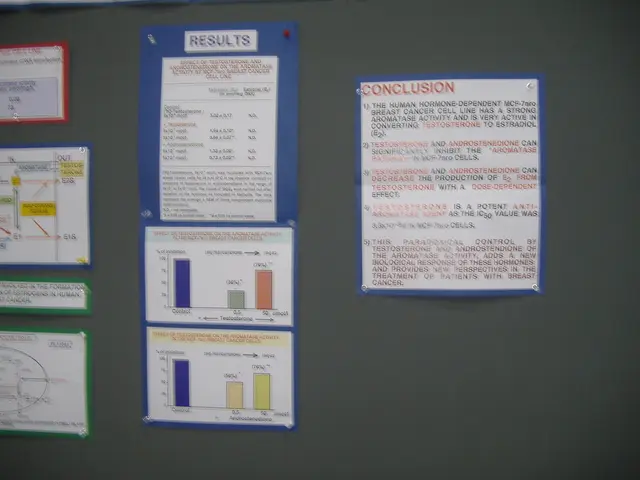Fed's Potential Interest Rate Cuts in 2024 and Opportunities for Businesses
Most Fed officials predicted in their latest economic projections that the Federal Reserve would lower interest rates at least once in 2024, with some anticipating as many as five cuts. This news delighted investors, and the Dow Jones Industrial Average reached new highs on December 13, 2023.
However, while interest rate cuts have captured investor attention, they're not a guarantee. The St. Louis Fed noted "significant uncertainties" in the Fed officials' forecasts about the future trajectory of interest rates. The uncertainty stems from the fact that the Fed's interest rate decisions hinge on their assessment of future economic conditions, or, in their terminology, the "assessment of aggregate data." For instance, if inflation exceeds expectations, the Fed might halt or even raise interest rates.
But if the Fed official prognostications prove accurate and the central bank begins interest rate cuts in 2024, what could be the reasons behind this move?
A Look Back at Recent Interest Rate Cuts
The last time the Fed lowered interest rates was during the COVID-19 pandemic. In a series of emergency meetings in March 2020, the Fed slashed interest rates by an unprecedented 1.25 percentage points and brought them close to zero. The Fed justified the rate cuts as a response to the threats COVID-19 posed to the economy.
Prior to the pandemic, when trade tensions between China and the U.S. escalated, the Fed reduced interest rates in 2019. The first of three rate cuts in that year took place in July.
Jerome Powell, the Chair of the US Federal Reserve, explained that a quarter-point cut was necessary to protect against "downside risks from weak global growth and geopolitical uncertainties" and to help offset the impact of these factors on the economy.
Powell described the first rate cut in that year, along with several further cuts, as "mid-cycle adjustments." This implied they were not the start of a prolonged period of rate cuts, but rather a minor adjustment to put the economy back on track. This was a sharp departure from the approach the Fed would have taken in a recession or a severe recession, Powell noted on the press conference following the July 2019 meeting.
Why Did the Fed Cut Interest Rates?
The two most recent interest rate cuts highlight two primary reasons for the Fed's interest rate cuts.
Justin Weidner, an economist at Deutsche Bank, said the Fed would cut interest rates "if the economy has problems." This was the prime factor leading to interest rate cuts in 2007, 2001, and 1990, which marked the start of different recessions.
Michael Gapen, the head of US Economics at Bank of America Securities, said the Fed would also cut rates preventively if data indicated a slowing economy or in response to a major event like 9/11. "This could lead to a overall weakness in the economy," Gapen noted.
Interest rate cuts aren't always a harbinger of trouble
Gapen suggested to CNN that next year's potential interest rate cut by the Fed was unlikely to be driven by the looming threat of a recession or the need to protect against one.
"This trajectory might differ from the past," Gapen said. He believed the Fed would cut rates in 2024 because inflation was approaching the 2% target of the central bank.
Gapen added that, should this scenario play out, the current target interest rates for the Fed might be too high and could hinder the economy.
However, Weidner and his team at Deutsche Bank have not ruled out the possibility of a recession in 2024. Their team forecasts that the U.S. unemployment rate could rise from the current 3.7% to 4.6% by the third quarter of the next year, as real GDP in the U.S. declines.
"This would be a bad situation," Weidner noted, and added that a rate cut would be warranted under those circumstances.
Business Opportunities in the Event of Lower Interest Rates
Should the Fed proceed with interest rate cuts, potential business opportunities might emerge due to cheaper borrowing costs. Some of these opportunities include:
- Easy Access to Capital: Lower interest rates make borrowing cheaper for businesses, enabling them to expand, invest in new projects, and hire more employees. This could stimulate economic activity and potentially boost job markets.
- Increased Consumer Spending: Lower borrowing costs can translate into reduced debt payments for consumers, enabling them to spend more on goods and services. This could benefit businesses that deal in products and services.
- Refinancing and Consolidation: With interest rates lower in the market, businesses may consider refinancing or consolidating their loans. This could lower their monthly payments and reduce the total interest paid over the loan's duration.
- Expansion and Hiring: Lower interest rates might spur businesses to initiate new projects, expand their operations, or ramp up production. This could lead to increased employment rates and elevated revenue for businesses.
- Competitive Advantage: Companies that can secure loans at lower interest rates than their competitors could gain a competitive advantage, allowing them to invest more in their operations and potentially outperform their rivals.
Source: edition.cnn.com
Enrichment Insights
While the prospect of fewer rate cuts in 2025 compared to previous expectations might limit potential business opportunities, some advantages could still emerge if interest rates were to decrease:
- Easier Access to Capital: Reduced interest rates make borrowing more affordable for businesses, enabling them to expand, invest, and hire. This can kickstart economic activity and possibly boost the employment market.
- Consumer Spending Boost: Lower interest rates can lead to lesser debt repayment costs for consumers, making it easier for them to spend more on goods and services. This could benefit businesses that focus on consumer products and services.
- Refinancing and Consolidation: Businesses can take advantage of low market interest rates to refinance or consolidate their debts. This could lessen their monthly repayments and reduce the total interest paid over the loan term.
- Expansion and Hiring: Lower interest rates might encourage companies to undertake new projects, expand, or boost production. This could result in increased employment rates and higher revenue for businesses.
- Competitive Edge: Firms that can obtain loans at lower interest rates than their competitors could enjoy a competitive advantage, allowing them to invest further in their operations and potentially surpass their counterparts.
However, it's essential to recognize that the Fed has signaled fewer rate cuts in 2025 and is currently leaning towards maintaining interest rates or adjusting them only slightly. Businesses should prepare to manage their finances effectively, irrespective of the interest rate environment.
[1]
[2]
[3]








